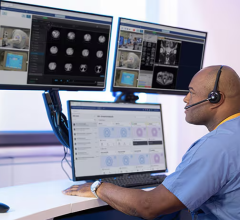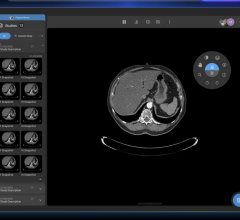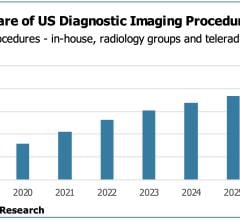The Deficit Reduction Act of 2005 (DRA), which went into effect on January 1, 2007, has left its mark on hospitals and imaging center operators. There is no denying that the imaging industry has changed forever. Some may think that the 10 percent of operators on the brink of bankruptcy or in default on payments to finance vendors is a mere market correction for years of overgrowth. But do the math.
With more than 11,000 imaging centers nationwide there are approximately 1,100 failing facilities. Finance vendors sheepishly share these statistics, but with customer sensitivity high and the need to protect their own economic well being, this number could possibly be higher. What is perhaps more frightening is the potential for further reimbursement cuts.
Vendors, consultants and organizations such as the American Healthcare Radiology Administrators (AHRA) and the Radiology Business Management Association (RBMA) have been busy educating operators on profitability tactics. Some of the cost-saving strategies implemented by imaging center operators that are helping them stay in the black since the onset of the DRA include:
Streamlining staff. Since imaging is a high fixed cost business, labor equates to a small portion of operational costs. However, centers that have reduced staff requirements and reorganized employees have realized savings in the thousands of dollars per month without sacrificing quality. Centers successful in downsizing have located high-quality, efficient staff. This requires a change in culture by rewarding employees for working harder than in previous years. This is achieved by structuring incentive plans tied to efficiency and service.
2Strengthening purchasing power. By consolidating purchasing efforts and buying from single suppliers, center operators are experiencing deeper discounts. For example, instead of buying from five different suppliers, opt to join a group purchasing organization (GPO) for better pricing. Oftentimes, customers believe they have secured the best deal only to find they paid up to 10 percent more than competitors when using the on-off supply vendor approach.
3Out with the new and in with the used. As always, there is a time for new and a time for used. A DRA-laden imaging environment calls for open mindedness. Operators purchasing used vs. new equipment are realizing the real bargains. Most importantly, buy only from reputable sources with industry experience.
4Fair market leases vs. buy. Those operators originally bent on purchasing new equipment have been considering lease options instead of outright purchases. This helps to decrease monthly payments and eliminate strain on the business.
5RIS lowers risk. RIS and PACS companies are booming due to advancements in technology and a demand for their services. A good RIS can improve efficiencies, pre-approve patients, ensure authorizations, collect co-pays and maximize revenues, all of which leads to cleaner claims.
6Assessing the real need. Many operators are determining what level of equipment service is necessary. Is a “gold” service package essential or will “silver” suffice? Renegotiating existing service contracts based on use rather than flat rates is another cost-saving trend.
7Pick your partner. Many operators have maintained profitability by forging innovative partnerships. In certain instances, centers have diversified by aligning with hospitals that aid in obtaining additional contracts, acquiring more referrals and strengthening borrowing positions. Partnering with a venture capital group specializing in healthcare is also an opportunity some have been considering and seizing to reduce risk and update equipment while they weather the storm.
8Restructuring debt. Many centers are refinancing their centers just like they would their homes to lower monthly payments.
9Careful collections. Last, but certainly not least, operators that have sustained a strong focus on billing and collections are true survivors. Centers must use what resources they have available to emphasize cash collections. It is no longer acceptable to have a nonchalant attitude – but necessary to collect every last nickel to successfully compete in today’s imaging industry.
New opportunities. In addition to employing these cost-saving practices, some outpatient providers have also been successful in implementing new programs that lead to increased revenue and sustained profitability. An example might be the adoption of cardiovascular computed tomography angiography (CVCTA) and the incorporation of breast MRI.
Despite continued loss of competition and the industry’s rapid roll-up (consolidation by large companies, which in turn have closed centers), there is a silver lining in the cloud that looms over this DRA-plagued imaging environment. It is estimated that the industry will see a significant increase in utilization, particularly as baby boomers age. Those centers that weather the storm have an opportunity to grab considerably more market share.
So what’s in store for this tumultuous industry in 2008? Medicare’s 0.5 percent conversion factor update is set to expire on July 1st this year, and the 10.6 percent cut hits unless Congress acts. These issues and other potential congressional and regulatory challenges are confronting imaging centers in 2008.
But, according to some, the glass is still half full, provided there are no further decreases in Medicare reimbursement and that commercial reimbursement continues at current levels.
Those with rose-colored glasses see an opportunity for operators willing to ride the wave as the demand for imaging only stands to rise.


 April 03, 2024
April 03, 2024 








